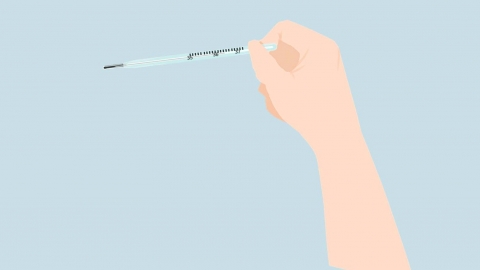How to reduce a child's fever of 38°C as quickly as possible
Fever refers to an elevated body temperature. A child's fever reaching 38°C may be caused by a hot and stuffy environment, vigorous activity, common cold, acute tonsillitis, infantile emergency rash, or other conditions. Usually, the fever can be reduced by improving the environment, physical cooling methods, and medication. If any abnormalities occur, prompt medical attention is recommended. Detailed explanations are as follows:

1. Hot and stuffy environment: When a child is in a closed, high-temperature environment, the body struggles to dissipate heat, causing the temperature to rise to 38°C. Immediately open windows for ventilation, use a fan to lower the ambient temperature, and remove excess clothing from the child to gradually reduce body temperature.
2. Vigorous activity: After running, playing, or other intense physical activity, a child's metabolism accelerates and heat production increases, causing a temporary fever of 38°C. Let the child stop activity, rest quietly, and drink some warm water; body temperature usually returns to normal within 15–30 minutes.
3. Common cold: A viral infection causes a common cold. The virus stimulates the immune system, triggering an inflammatory response that leads to a fever of 38°C, often accompanied by nasal congestion, runny nose, and mild coughing. Treatment should follow medical advice and may include medications such as children's paracetamol and chlorpheniramine granules, Bupleurum root and桂branch granules for fever relief, and ribavirin granules to alleviate symptoms.
4. Acute tonsillitis: Bacterial or viral infection causes inflammation of the tonsils, which triggers a fever of 38°C, often accompanied by sore throat, swollen, and red tonsils. Doctors generally recommend medications such as amoxicillin granules, Pudi Lan oral anti-inflammatory liquid, and Kehou Jian spray to control the infection and help reduce fever.
5. Infantile emergency rash: Caused by human herpesvirus 6 infection, the virus replicates in the body and causes a fever of around 38°C, possibly accompanied by generally good spirits and mild irritability. Treatment should follow medical advice and may include paracetamol suspension drops and oral rehydration salts to prevent dehydration. No special antiviral drugs are required, and the fever usually subsides once the rash appears.
In daily life, closely monitor the child's body temperature. At 38°C, prioritize physical cooling methods such as wiping the forehead and armpits with warm water. The child's diet should be light and easily digestible, ensuring sufficient water intake. If the fever lasts more than 24 hours, the temperature rises above 38.5°C, or symptoms such as lethargy, vomiting, or convulsions occur, seek immediate medical attention.




